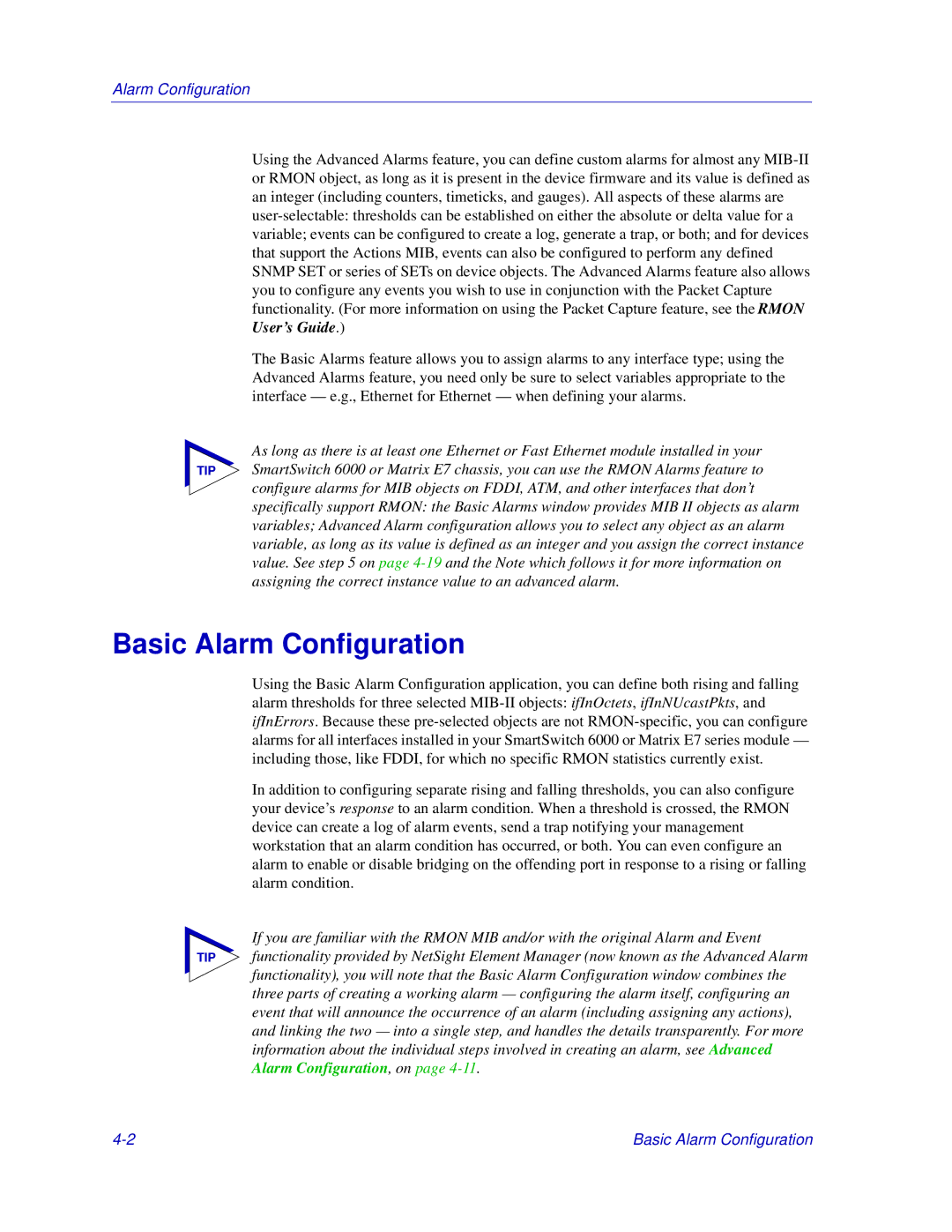
Alarm Configuration
Using the Advanced Alarms feature, you can define custom alarms for almost any
The Basic Alarms feature allows you to assign alarms to any interface type; using the Advanced Alarms feature, you need only be sure to select variables appropriate to the interface — e.g., Ethernet for Ethernet — when defining your alarms.
As long as there is at least one Ethernet or Fast Ethernet module installed in your
TIP SmartSwitch 6000 or Matrix E7 chassis, you can use the RMON Alarms feature to configure alarms for MIB objects on FDDI, ATM, and other interfaces that don’t specifically support RMON: the Basic Alarms window provides MIB II objects as alarm variables; Advanced Alarm configuration allows you to select any object as an alarm variable, as long as its value is defined as an integer and you assign the correct instance value. See step 5 on page
Basic Alarm Configuration
Using the Basic Alarm Configuration application, you can define both rising and falling alarm thresholds for three selected
In addition to configuring separate rising and falling thresholds, you can also configure your device’s response to an alarm condition. When a threshold is crossed, the RMON device can create a log of alarm events, send a trap notifying your management workstation that an alarm condition has occurred, or both. You can even configure an alarm to enable or disable bridging on the offending port in response to a rising or falling alarm condition.
If you are familiar with the RMON MIB and/or with the original Alarm and Event
TIP functionality provided by NetSight Element Manager (now known as the Advanced Alarm functionality), you will note that the Basic Alarm Configuration window combines the three parts of creating a working alarm — configuring the alarm itself, configuring an event that will announce the occurrence of an alarm (including assigning any actions), and linking the two — into a single step, and handles the details transparently. For more information about the individual steps involved in creating an alarm, see Advanced Alarm Configuration, on page
Basic Alarm Configuration |
